Language Cannot Convey in Colors True: A Hoosier in the Round Forest
Wounded during the fighting in the Round Forest at Stones River, Private Almon Stuart of the 9th Indiana recalled the desperate plight of the Federal army on the first day of the battle, and the part his regiment played in turning the tide.
"For a time Wednesday, it seemed as if our defeat was inevitable," recalled Private Almon Stuart of the 9th Indiana Infantry. "But the left wing, that portion of the army in which the old 9th Indiana is, held its own; nay more, they drove back a portion of the Rebel force and saved our army from destruction changing what seemed for a time certain defeat into a great and glorious victory. It should be called the Battle of Cottonfields for it was fought over not only woods, meadows, and cornfields, but also over three cotton fields, in all of which the cotton was ungathered."
Private Stuart's vivid description of the Battle of Stones River first appeared in the February 5, 1863, edition of the St. Joseph Valley Register published in South Bend, Indiana.
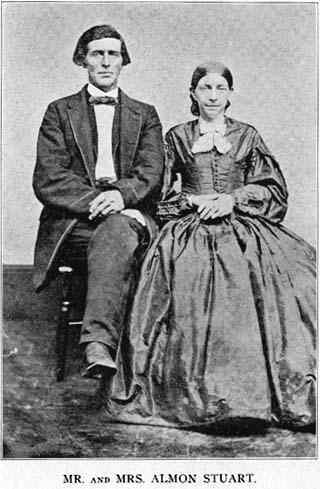 Private Almon Stuart served in Co. I of the 9th Indiana Volunteer Infantry and was an eyewitness to the ferocious fighting that engulfed the Round Forest on December 31, 1862.
Private Almon Stuart served in Co. I of the 9th Indiana Volunteer Infantry and was an eyewitness to the ferocious fighting that engulfed the Round Forest on December 31, 1862.
Camp near Readyville, Tennessee
January 12, 1863
Dear wife,
You may haveasked, “Why do you not write more about that terrible battle of the last ofDecember at Murfreesboro?” I would gladly write to you all the particulars ofthat bloody, awful conflict as far as I am acquainted with them. I would answerif I felt myself competent to paint or portray even in faint or feeble colorsthe horrible fierceness, the indomitable bravery that characterized both sidesthroughout the desperate fight, the fiercest battle yet fought in the war. Butno pen can paint, no language can convey in colors true the conflict of thatday.
We leftNashville camp on Friday morning December 26th, and that afternoonwe heard much firing both by artillery and cavalry in our front. We passedseveral dead horses laying by the side of the road and saw several woundedcavalrymen and artillerists and three dead men. Many trees were cut partly offby cannon balls from 3-20 feet from the ground.
A little before dark, ourregiment and the 6th Kentucky were sent into a thick wood somequarter of a mile off the road on the right to occupy the ground as picketstasked with protecting a large force of cavalry stationed in an open fieldclose by. Some of them had scoured the woods only half an hour before weentered it and reported no enemy there. We therefore marched into the woods incolumn, guns not loaded; the 6th Kentucky, luckily, had theirsloaded. We advanced about 80 rods when all at once a heavy continuous fire ofrifles opened on us only a few rods from us in our front. Our regiment wasthrown into some confusion, but soon recovered. The 6th Kentuckyopened a heavy fire at once, we soon had our guns loaded, then deployed asskirmishers and returned their fire with interest.
One man in Co. C of our regimentwas killed and another wounded; one of the 6th Kentucky was killedand two wounded; the Rebel loss is not known. After driving the Rebels somedistance, we formed in column and left the woods, camping in a cedar swamp overa half mile to the left of the pike. That day’s experience was but the preludeof what followed for the next 8 days. The nearer we approached to Murfreesboro,the more frequent and incessant grew the firing, every inch of ground for about20 miles was contested by the Rebels. Dead men and horses often met our sightand many wounded, too, in the gallant fight.
At length, on Monday the 29th,we arrived and camped within a third of a mile of the ground which we were sosoon to moisten with our blood. All the next day, we lay inactive, listening tothe roar of the cannon and the rattle of musketry at intervals through the day,on our right, left, and front, darkness only putting an end to the battle.
Wednesday’s sun arose bright andbeautiful to look down on a scene of carnage, a long day of conflict. Yet erehis beams illumed the east, just at the dawn of day, the cannons’ roarproclaimed death’s feast and called us to the fray.
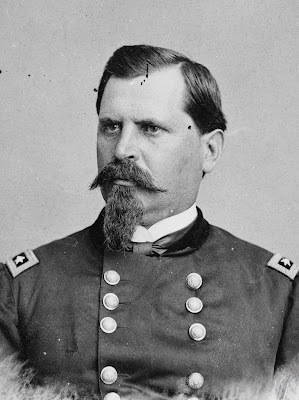 Colonel William B. Hazen earned his brigadier's star for his stout defense of the Round Forest during the Battle of Stones River.
Colonel William B. Hazen earned his brigadier's star for his stout defense of the Round Forest during the Battle of Stones River. Our brigade, consisting of the41st Ohio, 110th Illinois, 6th Kentucky, andour regiment, marched out of the woods in which we had passed the night andformed in order of battle in a large cotton field (the cotton was still hangingon the stalk and whitening the ground) with the 41st and 110thin the advance. The morning was cold; all of us were flag enough to hover overand around fires, which were burning and smoking in every direction. From earlydawn, we had heard heavy firing on our right. As the day advanced, firing washeard on our left and front and soon it seemed as if the enemy were surroundingus.
It was now between 8 and 9 a.m.The 41st and 110th were fiercely engaged with the enemyon our left and front only about a quarter of a mile off. We were at the timeordered to lay down close by the woods that skirted the cotton field. Whilelaying there, a small scale from a stone that had been struck by a shell hit meon my right hand, on the back of it, just drawing blood. (It is now entirelywell.) A little before 10 a.m., we formed in line of battle and relieved the 41st.At this time, we could see the fire from the Rebels’ guns, both in our frontand rear. In our rear, our men were broken, many of them flying in confusion,but we soon forgot them in the conflict in which we now engaged.
We fired a terrible volley as wearrived on the ground the 41st had occupied and three such lustycheers or yells as we then sent up, heard above the roar of battle and thegroans of the wounded. We then lay down or kneeled down on one knee, and thusloaded and fired as fast as possible. I stood up almost every time that Ifired. Cos. D and I opened to the right and left, making an open space, throughwhich two cannons, stationed a few rods in our rear, belched forth their ironmessengers of death. Thus, for hours we fought, with the dead and woundedfalling around us.
At length, when loading my gunfor the 52nd time, a ball from the foe on a death mission bound didits mission forego and dealt me a slight wound on my left index finger. Theball hit me I found, so finding it useless to linger, I in haste left theground. As I left the field (carrying my gun and the captain’s sword as he hadbeen wounded and carried off the field sometime before), I passed W.W. Roper,limping off, many others more or less wounded.
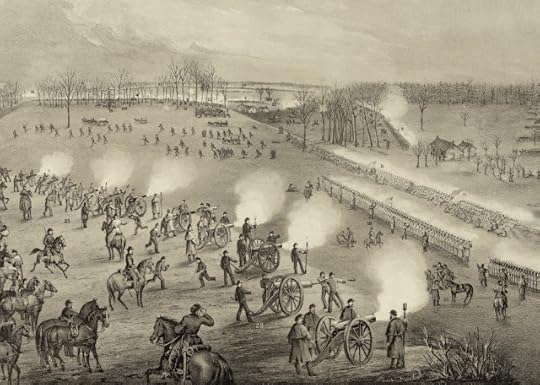 Albert Mathews' depiction of the fighting along the Nashville Pike on the afternoon of December 31, 1862 shows the 9th Indiana in action in the Round Forest at the upper left. It is worth noting that on the west side of the Nashville Pike sat a small structure known as the Toll House.
Albert Mathews' depiction of the fighting along the Nashville Pike on the afternoon of December 31, 1862 shows the 9th Indiana in action in the Round Forest at the upper left. It is worth noting that on the west side of the Nashville Pike sat a small structure known as the Toll House. I made my way to the hospitalsome distance off. But what s sight there met my view. Dying or dead, our braveand true, were lying there on every side with none to care for them, none toprovide for needful wants, their wounds to bind, and cheer them up with kindwords. I found none of our company or regiment here so I went to another hospitala half mile further off and here I found our assistant surgeon. John Knowltonwas brought in here just as I arrived. I got a bandage from the doctor and doneup my finger.
Very soon, we all had to leaveas the Rebels opened fire on one of the batteries stationed close by. I wentinto a wood a short distance off and passed the night lying around poor firesas Rosecrans had ordered all fires extinguished. Darkness put an end also tothe day’s fighting. Our regiment, shortly after I left them, fell back to therailroad some 60 rods where, protected by a high bank as the railroad was cutthrough a small hill and the track being about five feet below the level of theground on either side, our boys held their position until night.
On New Year’smorning, I hunted up the regiment and stayed with them an hour or so then wentto the general hospital a mile or so away on the Murfreesboro Pike and spentthe rest of New Year’s there, feasting on raw bacon and hard crackers. In theafternoon, I went round through the hospital tents, some 100 or more men in everyone; 3-12 were lying all badly wounded in some of them. The doctors werecutting off feet or legs, arms or hands or fingers, piles of which were lyingoutside of those tents. The large brick hospital two stories high was full ofwounded, laying or seated around in every direction, hundreds of them and morecoming in every moment. Many were Rebels, a good many, too, were laying withblankets thrown over them on every side. I passed the night laying outdoorsbefore a fire on two wide boards. The battle raged all this day, too, atintervals with more or less violence although not near as yesterday.
The next morning (Friday January2nd), I went to the division hospital and spent the day there,fighting at intervals through the day while many of the wounded left forNashville in supply and ammunition wagons. Awful fighting for an hour or soabout sundown and until after dark on our left, the fiercest fighting by far ofthe entire battle. On Saturday, also, a good deal of firing in different partsof the battlefield and after dark a long, sharp fight on our front and left,the last effort of the enemy in his death struggle for victory in which he wassignally defeated. Thus after 9 days of fighting between our forces, the Rebelswere compelled to evacuate Murfreesboro and fly in confusion towardChattanooga.
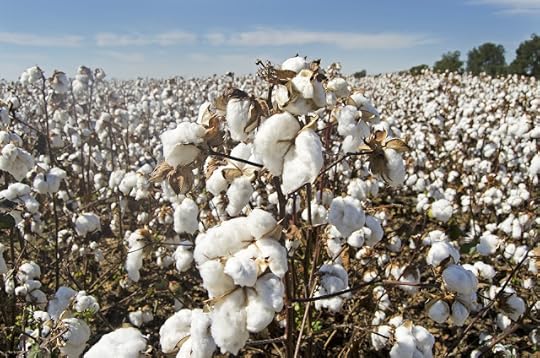 "It should be called the Battle of Cottonfields for it was fought over not only woods, meadows, and cornfields, but also over three cotton fields, in all of which the cotton was ungathered."
"It should be called the Battle of Cottonfields for it was fought over not only woods, meadows, and cornfields, but also over three cotton fields, in all of which the cotton was ungathered." For a time Wednesday, it seemedas if our defeat was inevitable. Our right was surprised early in the morning,many were taken prisoner, and the whole right wing of our army was driven backa mile or so in much confusion. Our center also was driven before the enemy andsome say broken, but the left wing, that portion of the army in which the old 9thIndiana is, held its own; nay more, they drove back a portion of the Rebelforce and saved our army from destruction changing what seemed for a timecertain defeat into a great and glorious victory.
On Sunday, our advance occupiedMurfreesboro and our cavalry and several pieces of flying artillery (lightsmall cannon) pursued them several miles beyond Murfreesboro, taking manyprisoners and capturing a good many arms. Thus ended a long terrible battle. Itshould be called the Battle of Cottonfields for it was fought over not onlywoods, meadows, and cornfields, but also over three cotton fields, in all ofwhich the cotton was ungathered.
The battlefield of Tuesday,Wednesday, Thursday, Friday, and Saturday covered a extent of country 7-8 mileseach way and over all that country when we left last Wednesday could be seenthe relics of the fight: broken guns, torn clothing, old cartridge boxes,broken wheels of artillery wagons, and dead horses in every direction.Everything to remind one of the awful destruction of life and property.
Source:
Letter from Private Almon Stuart, Co. I, 9thIndiana Volunteer Infantry, St. Joseph Valley Register (Indiana),February 5, 1863, pg. 2
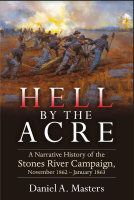 To learn more about the Stones River campaign, be sure to check out my new book "Hell by the Acre: A Narrative History of the Stones River Campaign" available now from Savas Beatie.
To learn more about the Stones River campaign, be sure to check out my new book "Hell by the Acre: A Narrative History of the Stones River Campaign" available now from Savas Beatie.
Daniel A. Masters's Blog
- Daniel A. Masters's profile
- 1 follower



